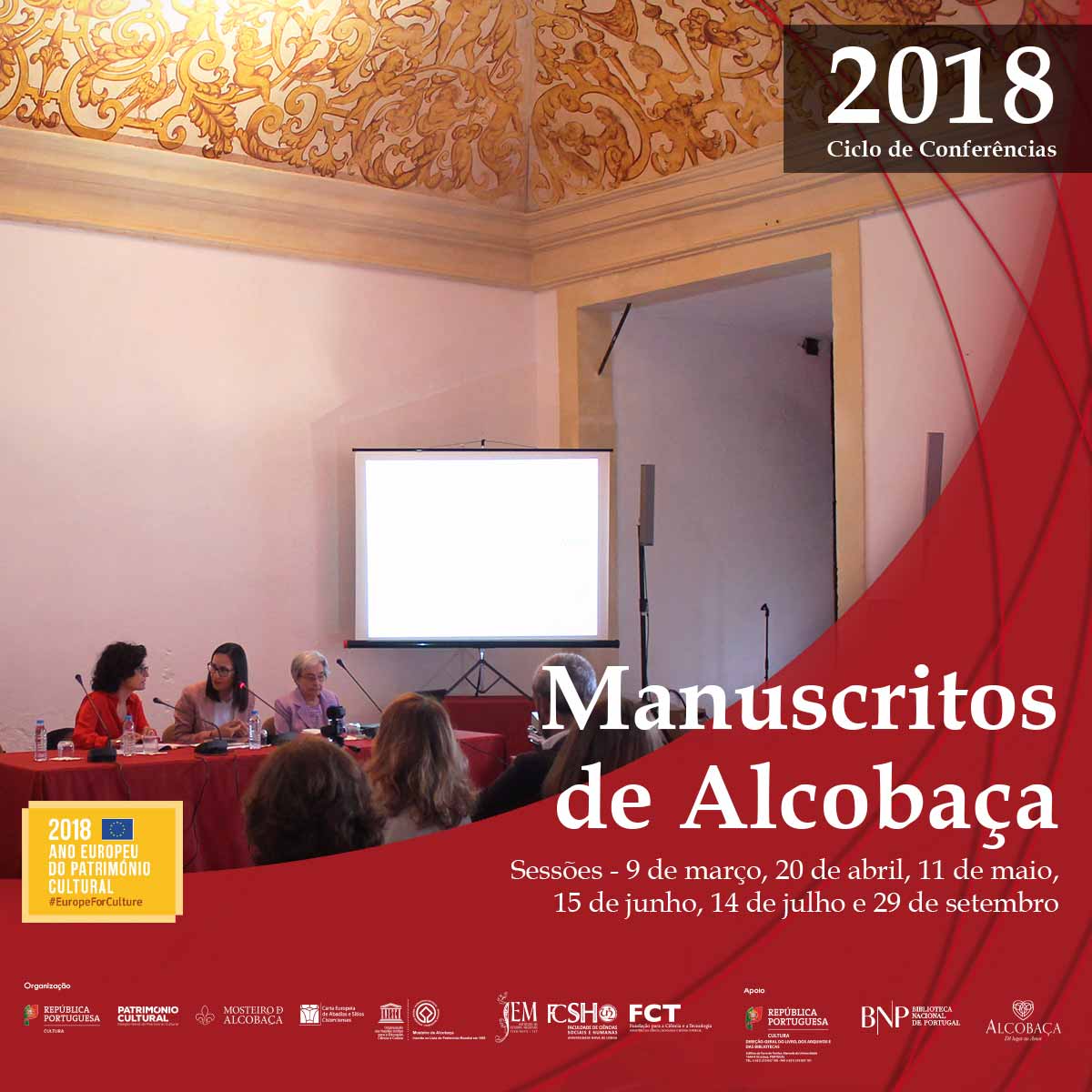Conference Cycle Manuscritos de Alcobaça II – materialidades, temas e problemas | 5th Session
14.07.2018
Sala das Conclusões, Mosteiro de Alcobaça

The fifth session of the “Manuscritos de Alcobaça II” will take place on July 14, and will feature a lecture by Iria Gonçalves from the Institute of Medieval Studies of the School of Social Sciences and Humanities of the NOVA University (IEM-NOVA FCSH).
Conference:
“Alcobaça e Lisboa: um feixe de relações nos finais da Idade Média”, by Iria Gonçalves (IEM-NOVA FCSH)
From very early, Lisbon was considered the most important Portuguese city and soon began to attract to itself, and increasingly, people, activities, wealth, and power.
Largely endowed by Afonso Henriques with vast lands dismembered from the Leiria’s forge, but which this town had not even begun to organize, the Alcobaça Monastery took charge of this task and asserted itself in it with great efficiency. It grew, generated wealth, and became one of the most important Cistercian houses in the Iberian Peninsula.
In this sense, it developed more and more. It showed properties all over Extremadura, and also in Alentejo. It entered cities and towns. In Lisbon, they built houses all over the urban area, and in the eastern suburbs, he erected a prayer house: the Monastery of São Bento de Xabregas.
Much was traveled during the entire Middle Ages between Alcobaça and Lisbon, despite the two days’ journey between the two, many relations were forged, of economic, social, cultural, and religious nature. This last one with its maximum expression in the Lisboetas that integrated the Alcobaça’s choir.
